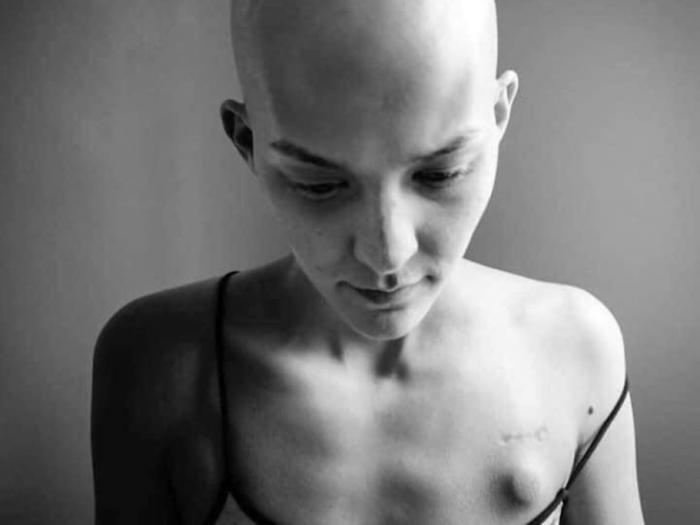I, like many, have been greatly impacted, by the singer and songwriter Jane Marczewski, and her words, on America’s Got Talent.
Nightbirde, fighting cancer, and singing “It’s okay,” has gone viral.
She is strong, she is vulnerable, and she is authentic, as she sings the realities of her life. It is not just the song she sings; it is the words that flow from her. The acknowledgement of her current state, the permission to be human, and the desire to make every moment of the life she has count.
“No, I am not okay, not in every way.”
“It is important that everyone knows that I am so much more than the bad things that happen to me.”
“It’s okay, it’s okay, we’re all a little lost, and it’s alright.”
“You can’t wait until life isn’t hard anymore before you decide to be happy.”
“I have a two percent chance of survival, but two percent is not zero percent.”
It is so easy, when bad things happen to us, to lose hope, and question, “Where did we go wrong to deserve some of the incredibly challenging things life throws our way?”
Sometimes it is easy to feel that life is so unfair and perhaps it has been. We may feel a sense of despair that somehow, we have been short-changed when happiness was being served. Ultimately, we are p*ssed off at life and in many ways, we have a right to be.
The truth is “we are all a little lost, and it’s alright.”
There is a narrative that we seem to have immersed ourselves in that we are only doing well when we are not experiencing any challenges—when life is smooth and we do not have bad things happening to us. But what if they keep happening?
We try so hard to pretend like everything is fine and that we are okay. We morph into Pollyanna, and we portray to the world and ourselves that life is so awesome for us. We ooze positivity and a false sense of gratitude to deny the realities of our lives. We might truly believe that our lives are perfect because our denial allows us to survive and defend any signals for danger within our own bodies, within our relationships, and within the environments that surround us.
Then there are some of us who are the eternal pessimists who believe that we are cursed and probably did something heinous in previous lives that has destined us to a life of constant suffering, and we feel trapped, forever exhausted to the point that we wonder, “Why the hell do we even try?” For those of us on the opposite end of the spectrum, we collapse in despair and we lose hope. We stop doing and we simply drift, we surrender and accept our fate.
There are still some of us who fight and get really busy. We push ourselves to overcome. We fight with ourselves, we fight with others, and we run from one activity to the next, keeping so busy that we have no moments to catch our breath.
Working with many and reflecting on my own challenges, I am convinced that all of what happens in our lives are not personal. It is simply the human experience and for some, it is worse than for others. We cannot fix everything so that we never have to suffer. We will never fully rid ourselves of all our trauma and process every layer to be completely healed.
I also do believe that bad things do happen to good people and the law of attraction can sometimes be a manifestation of delusions of grandiosity. We want to feel omnipotent, in control, successful, rich, happy, and healthy. We shame those whose realities are different, which alienates others and further intensifies their suffering.
“We are all a little lost, and it’s alright.”
“You can’t wait until life isn’t hard anymore before you decide to be happy.”
Having worked with so many over the past two decades and processing my own challenges, struggles, and heartache, I have learnt that understanding how our nervous system is responding can determine how we change and respond to the struggles we have been dealt. At this time of a pandemic with all its uncertainty, there isn’t anyone not experiencing life’s distress. Our nervous system is scanning the environment (both internally and externally) all the time, on the watch out for danger.
I have put together a few identifying features of the Three —the colors are not as important and you can make up your own colors if you wish.
They draw from my work and training in Neuroscience by Stephen Porges (Polyvagal Theory) and Neuropsychotherapy. Deb Dana in her work referred to as Rhythm of Regulation, provides a useful Regulation Resource Map. The ladder is divided into three parts: Ventral Vagal (Green), Sympathetic (Yellow), and Dorsal Vagal (Purple). When our nervous system feels safe, we are able to acknowledge our emotional distress and still stay connected. This is when we are in our Green Ventral Vagal activation that does not mean the absence of illness, loss, or distress.
We have a built-in survival system that allows us to enter the Yellow (Flight/Fight) and Purple (Freeze). We need this in order to survive challenges.
We cannot live in Green Ventral Vagal activation 24/7 because we live in environments that are not always predictable and can signal danger. The problems listed below are what happens when we stay too long in our survival responses. The essence of resilience is being able to get unstuck from the Yellow and Purple and to stretch into and draw nourishment from our Green “Moments.”
Difficulties arise when we feel trapped and stuck and when we cannot transition into the Green, Ventral Vagal regulation. When we incorporate Green Moments for ourselves as individuals, within our bodies, within our environments, and between ourselves and others, we can feel safe and connected.
These are mere examples and will never completely match each of our individual experiences. They serve as a guide for reflection.
Green (Safety)
- Singing or Humming
- Yoga breathing (Parayanam)
- Movement and Yoga
- Spend time in Nature (even viewing it on a screen)
- Engaging with professional support
- Surrounding ourselves with our tribes for nourishment
- Create a tribe
- Say Yes, Say No
- Affection
- Laughter
- Pets
- Spend time nurturing your body, mind, and spirit
- Being honest with what we feel, even if it isn’t positive and gleaming with glitter
- Reach out and Reach within
- Play and have fun
- Grieve in safety
- Love deeply and more so ourselves.
- Pass it forward and be of benefit
- Cultivating a compassionate and nurturing inner voice, reflected in our self-talk.
Yellow (Fight/Flight Response)
- Pretending to be happy when we are not
- Running on nervous and anxious energy
- Feeling on edge
- Engaging in maladaptive ways to manage our suffering.
- Unable to still the monkey mind
- Sleep and eating disturbances
- Doing too much and juggling too many responsibilities
- Hypervigilant
- Setting unrealistic expectations of ourselves and/or others
- Setting rigid and porous boundaries
- Perfectionism
- Irritability, anger, and rage toward self and others.
- Overly pleasing and prioritizing others.
- Decreased self-care and neglectful of our own needs and values.
- Taking too much or no medication that is needed.
Purple (Freeze)
- Overwhelmed
- Despair
- Faint
- Low energy and poor attention
- Self and other punishment
- Withdrawal and disconnect with self and others
- Breakdown of all support systems
- Hopeless and helpless
- Collapse
- Passivity
- Cannot get out of bed
- Little to no activities
- Using substances and behaviors to numb out and dissociate
- Feeling numb
Many of us, when we reflect on each of the part of the ladder might find that we have had many Green Moments along our journey. What a blessing. The struggle is often when we have had more Yellow and Purple areas in our lives.
When we stay too long in the Yellow and Purple activation, we experience feeling unsafe and disconnected but most of all, stuck. Resilience is born in the face of adversity, but too much adversity can take us out of the window of tolerance, making change excruciating and out of our reach. We may at these times have to really stretch towards Green Moments.
How can we create more Green Moments?
1. Try and identify your unique feelings, thoughts, and behaviors that inform your Green, Ventral Vagal moments.
2. Be aware that you are entering an Yellow and Purple nervous system responses and possibly staying too long in them.
3. Commit to daily stretching into safety and nourishment of our Green Ventral Vagal activation, even if we start with five minutes a day.
4. Find safe people to connect with as isolation can feel like quicksand.
5. Find professionals who feel safe and warm to assist us in getting unstuck from the Amber and Purple responses.
I do wish life was easier. I know it isn’t easy for many. We cannot live all the time in our Green Moments. Resilience is the ability to enter into Sympathetic and Dorsal Vagal responses but not stay stuck in there. We need to stretch towards what makes our nervous systems feel safe.
We are not alone in our suffering. We are not cursed. We are challenged but we can grow our resilience. We know and accept that life might never be smooth sailing. We have hope that we won’t stay too long in our Yellow and Purple responses and that even though we are tired, that we will move toward our Green Moments of Ventral Vagal and step into our own strength, vulnerability, and authenticity.
We too can say, “It is important that everyone knows that I am so much more than the bad things that happen to me.”
~








Read 40 comments and reply